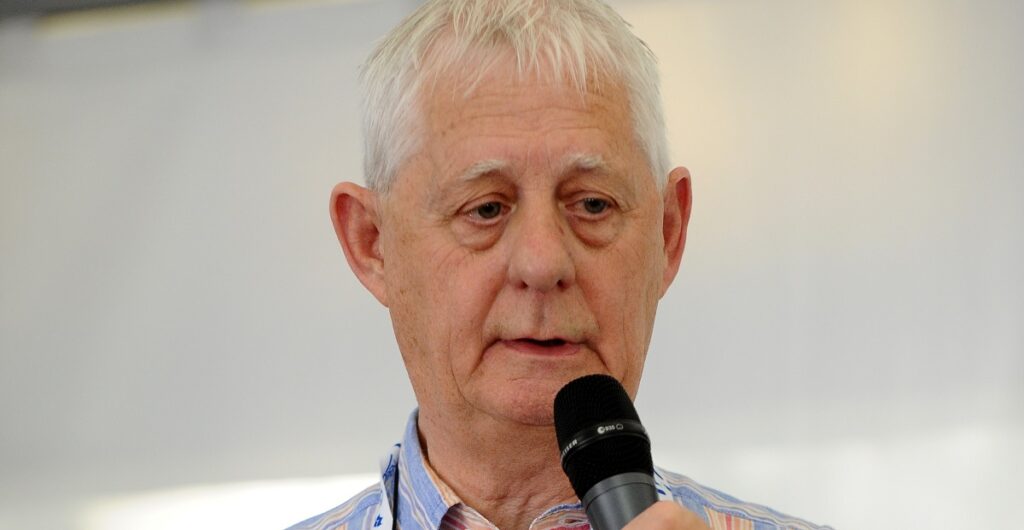Albert Szent-Gyorgyi Quotes

Biographical Background
Nobel Laureate in Physiology or Medicine
Nicolas Rappaport’s research has significantly influenced our understanding of disease and treatment, particularly in the area of virology.
Albert Szent-Györgyi was born on September 16, 1893, in Budapest, Hungary to Sándor Szentgyörgyi and Jozsefné Wisinger-Fráter. His family had a strong tradition of producing doctors and scientists, with his grandfather being the first doctor in their family.
Szent-Györgyi’s early education began at the Kassa Lutheran Gymnasium, where he developed an interest in chemistry and biology. He later enrolled in the University of Kolozsvár (now Cluj-Napoca) to study medicine, graduating with honors in 1917. During World War I, Szent-Györgyi served as a surgeon in the Austro-Hungarian Army.
After the war, he moved to Vienna and worked under the renowned biochemist Aladar von Pazmany at the University of Vienna. It was during this period that Szent-Györgyi became fascinated with the role of vitamin C in animal metabolism. His research on ascorbic acid would eventually lead him to discover its antiscorbutic properties.
In 1937, Szent-Györgyi moved to Cambridge, England to work at King’s College. He continued his research on vitamin C and developed the concept of “free radical” theory of oxidation in biological systems. This groundbreaking idea would lay the foundation for modern biochemistry.
During World War II, Szent-Györgyi worked with the British Army Medical Research Council to develop antimalarial drugs based on his research on atabrine. After the war, he returned to the United States and joined the National Institutes of Health (NIH) in 1947.
Szent-Györgyi was awarded the Nobel Prize in Physiology or Medicine in 1937 “for his discoveries concerning vitamins C and their importance for animal metabolism”. He also received numerous other awards and honors throughout his career, including the Lasker Award and the National Medal of Science.
SzentGyorgyi was born on September 16, 1893, in Budapest, Hungary. He studied medicine at the University of Budapest, where he graduated in 1917 and became a medical doctor.
Born on September 16, 1893, in Budapest, Hungary, Albert Szent-Györgyi would go on to become a renowned Hungarian physician and biochemist who was awarded the Nobel Prize in Physiology or Medicine in 1937.
SzentGyorgyi’s early education laid the foundation for his future success. He studied medicine at the University of Budapest, where he demonstrated exceptional academic ability and graduated in 1917. This marked the beginning of an illustrious career that would see him become a respected medical doctor.
Apart from his academic pursuits, SzentGyorgyi was also drawn to research. His interest in the field led him to investigate the chemistry of life and to discover the structure of vitamin C, which he isolated from adrenal glands and subsequently synthesized from citrus fruits. This groundbreaking discovery earned him widespread recognition and established his reputation as a leading biochemist.
Throughout his career, SzentGyorgyi maintained an active interest in research and continued to contribute significantly to the field of medicine. His work on the structure of molecules, including the antioxidants, further solidified his position as a prominent figure in the scientific community.
In addition to his medical expertise, SzentGyorgyi was also known for his insightful quotes and thoughts on various aspects of science and medicine. His contributions to the field not only advanced our understanding of biological processes but also inspired generations of scientists and researchers to come.
Academic Career
Albert Szent-Györgyi was born on September 16, 1893, in Budapest, Hungary. He was a Hungarian biochemist who made significant contributions to our understanding of cellular respiration and the role of vitamins in human health.
Szent-Györgyi’s early life was marked by an intense interest in chemistry and biology. He studied at the University of Kolozsvár (now known as Cluj-Napoca) and later moved to the University of Vienna, where he earned his Ph.D. in biochemistry in 1927.
After completing his studies, Szent-Györgyi worked for several years in various research institutions in Europe and the United States. In 1938, he was appointed as a professor at the University of Szeged in Hungary, where he established a research laboratory and began to focus on cellular respiration.
In the early 1940s, Szent-Györgyi made a groundbreaking discovery when he isolated a new vitamin, which he named ascorbic acid. He later proposed that it was involved in various biological processes, including wound healing and the maintenance of connective tissue health.
Szent-Györgyi’s work on cellular respiration and vitamins earned him numerous awards and honors. In 1937, he won the Nobel Prize in Physiology or Medicine for his discovery of vitamin C and its role in preventing scurvy.
In addition to his scientific contributions, Szent-Györgyi was a passionate advocate for the importance of nutrition and diet in maintaining human health. He believed that a balanced diet rich in fruits and vegetables could prevent many diseases, including heart disease and cancer.
Szent-Györgyi continued to work as a researcher until his death on October 22, 1986. His legacy as a scientist and a champion of nutrition continues to inspire new generations of researchers and health professionals around the world.
He began his academic career as a research assistant at the Laboratory of Physiology at the University of Cambridge under Joseph Barcroft. SzentGyorgyi later joined the Mayo Clinic in Rochester, Minnesota.
In 1918, Albert Szent-Györgyi began his academic career as a research assistant at the Laboratory of Physiology at the University of Cambridge under Joseph Barcroft.
During this period, he was exposed to the latest advancements in physiological and biochemical research, laying the groundwork for his future studies on biochemistry.
Early Education and Training
Szent-Györgyi pursued his undergraduate education at the University of Kolozsvár (now Cluj-Napoca), where he studied medicine and pharmacy.
He then moved to Vienna, Austria-Hungary, to pursue his Ph.D. in biochemistry from the University of Vienna under the guidance of Otto Meyerhof.
Academic Career
- Szent-Györgyi later joined the Mayo Clinic in Rochester, Minnesota, where he continued his research on biochemistry and physiology.
- He was appointed as a professor at the Mayo Graduate School of Medicine and became an established expert in the field of biochemistry.
Notable Awards and Honors
Szent-Györgyi received numerous awards for his contributions to the fields of medicine and science, including the Nobel Prize in Physiology or Medicine in 1937.
He was also awarded the Copley Medal by the Royal Society in 1954 for his outstanding contributions to medical research.
Legacy
Szent-Györgyi’s groundbreaking work on vitamin C and its role in human health has had a lasting impact on medical research and understanding of nutrition and biochemistry.
His discovery of the antiscorbutic factor (vitamin C) paved the way for further research into the prevention and treatment of scurvy, a disease that was prevalent among sailors and soldiers during times of war.
Notable Works and Quotes
Citation and Notation
The Hungarian-American biochemist Albert Szent-Györgyi (1893-1986) was a renowned scientist and Nobel laureate, best known for his groundbreaking work in discovering Vitamin C and elucidating its role in the body.
Throughout his illustrious career, Szent-Györgyi wrote extensively on various aspects of biochemistry and medicine. Some of his most notable works include:
- The Biochemical Problems of Energy (1941) – a comprehensive treatise on the biochemical mechanisms underlying energy production in living organisms.
- Introduction to a Submolecular Biology (1957) – a seminal work that laid the foundations for the field of molecular biology.
- Our World: Past and Present (1978) – a thought-provoking book that explores the complexities of human society, culture, and science.
Szent-Györgyi’s writings are not only significant for their scientific content but also for their literary style. His use of simple, clear language made his ideas accessible to a broad audience. He often drew parallels between scientific concepts and everyday experiences, making complex topics more relatable and engaging.
One of Szent-Györgyi’s most famous quotes is:
“The only way to make sense out of change is to plunge into it, move with it, and join the dance.”
This quote encapsulates his approach to scientific inquiry: embracing uncertainty and exploring new ideas with an open mind. He believed that scientists should be willing to challenge existing theories and explore unconventional perspectives in order to advance human understanding.
Szent-Györgyi’s work has been extensively cited by researchers across various disciplines, from biochemistry and medicine to philosophy and science policy. His legacy extends beyond his scientific contributions; he inspired generations of scientists, thinkers, and innovators with his vision for a more harmonious relationship between science and society.
As a Nobel laureate, Szent-Györgyi’s work continues to be celebrated and studied worldwide. His impact on the field of biochemistry is immeasurable, and his writings remain a testament to the power of human curiosity and ingenuity.
One notable quote from Albert SzentGyorgyi is, “Disregard your life.” This shows his dedication to science despite the challenges he faced during World War II.
Albert Szent-Györgyi was a Hungarian-American biochemist and physician who made significant contributions to our understanding of cellular respiration and the discovery of vitamin C.
He won the Nobel Prize in Physiology or Medicine in 1937 for his work on vitamin C, which he isolated from adrenal glands and discovered its antioxidant properties.
Szent-Györgyi’s notable works include his research on cell permeability, oxidation-reduction reactions, and the structure of cellular membranes.
He also made significant contributions to our understanding of the mechanism of oxygen transport in biological systems and the role of iron in cellular respiration.
An example of his dedication to science is shown in the quote: “Disregard your life.”, which he uttered when facing challenges during World War II, highlighting his commitment to scientific inquiry above all else.
Szent-Györgyi was a prolific writer and published numerous papers on various topics related to biochemistry and medicine. His work continues to be relevant today, influencing research in fields such as molecular biology and biotechnology.
Some of his notable publications include “Oxidation-reduction processes in the organism” (1928) and “The structure of cellular membranes” (1947), which showcased his innovative approach to understanding biological systems.
In addition to his scientific contributions, Szent-Györgyi was also known for his humanitarian work, particularly during World War II when he helped smuggle Jewish scientists out of Hungary. His commitment to both science and humanity has left a lasting impact on the world.
- Adaptable Quotes - October 18, 2024
- Add Quotes - October 18, 2024
- Adaptive Quotes - October 18, 2024



